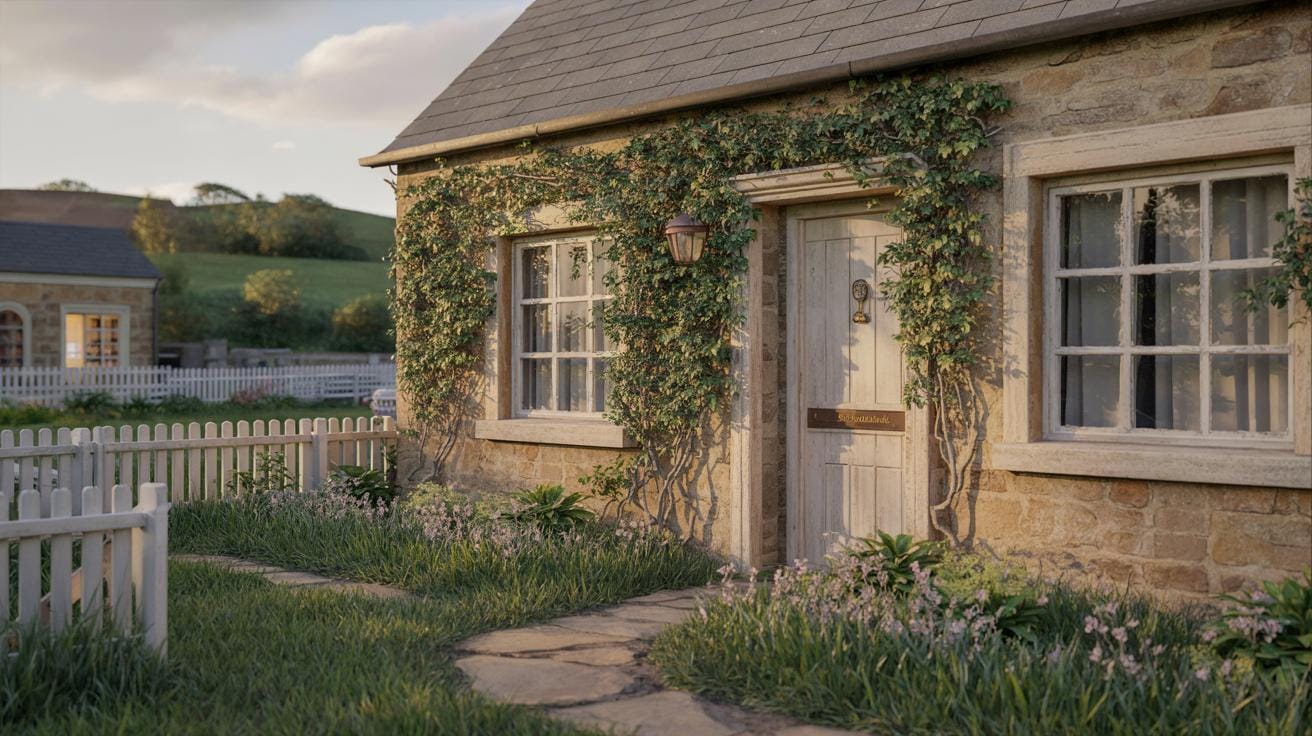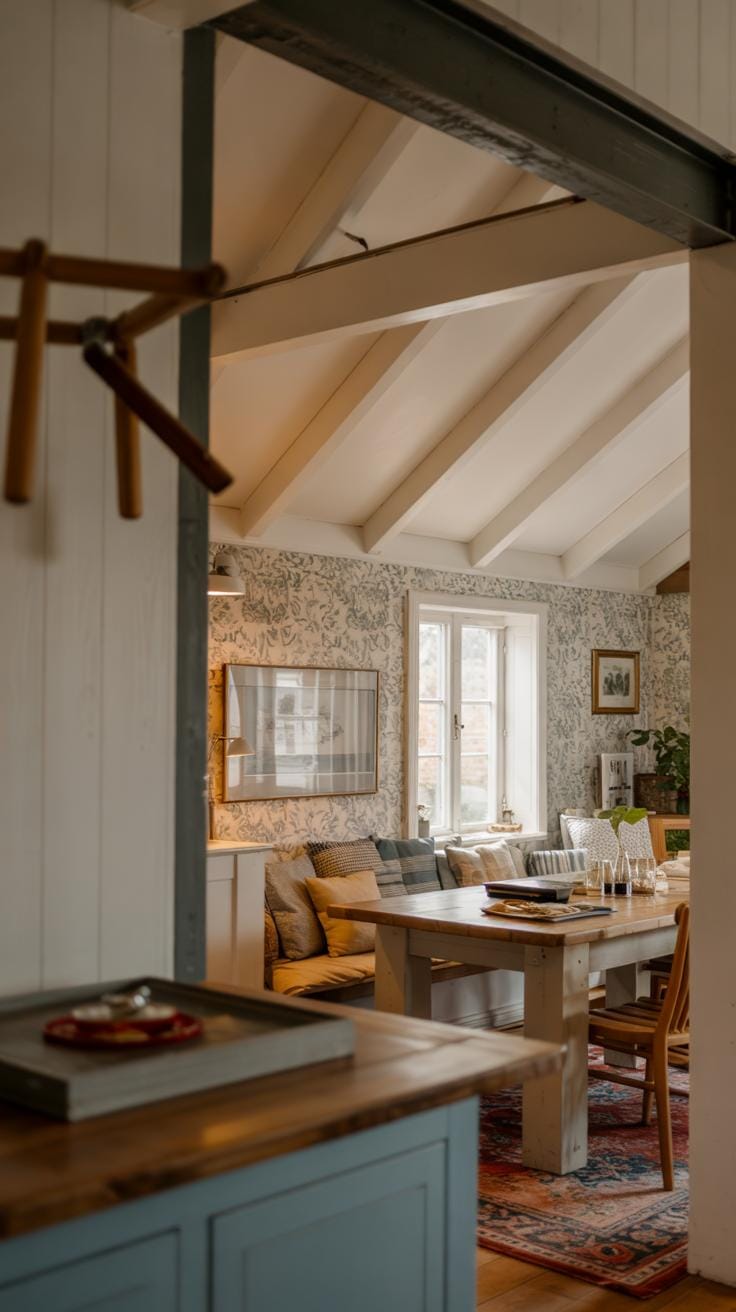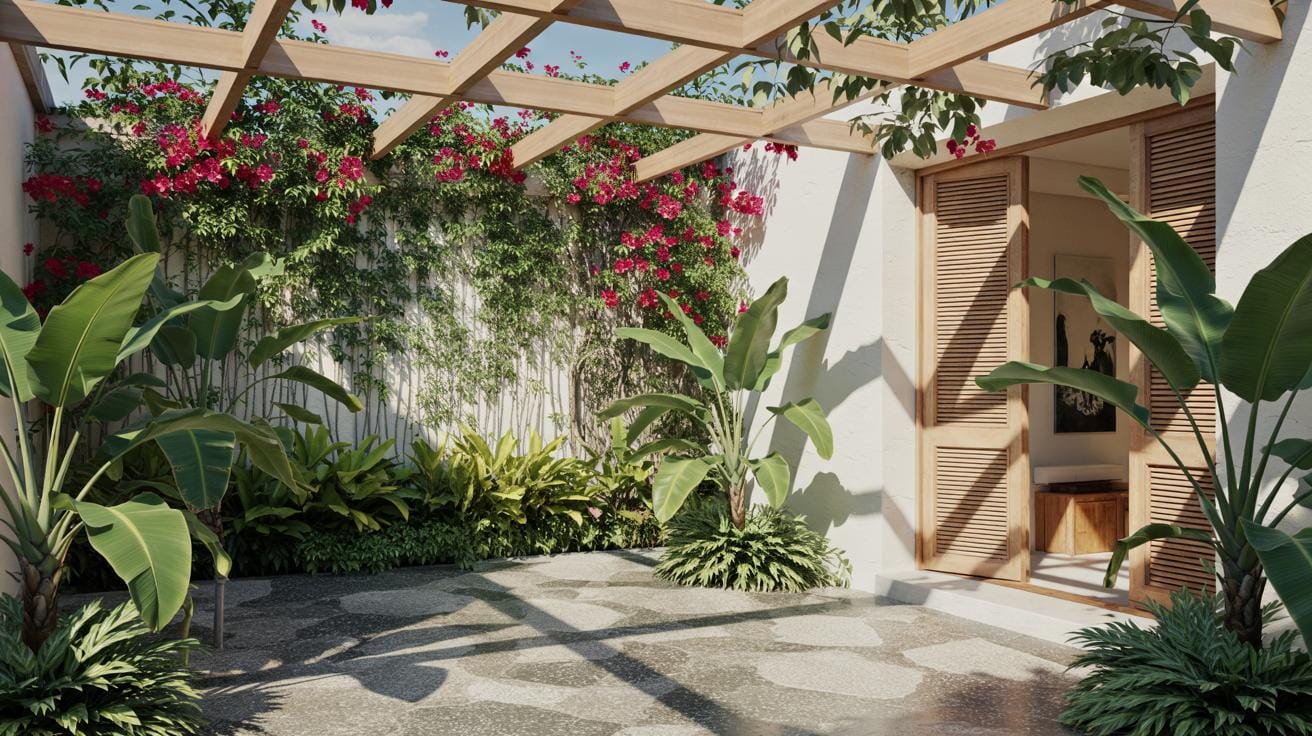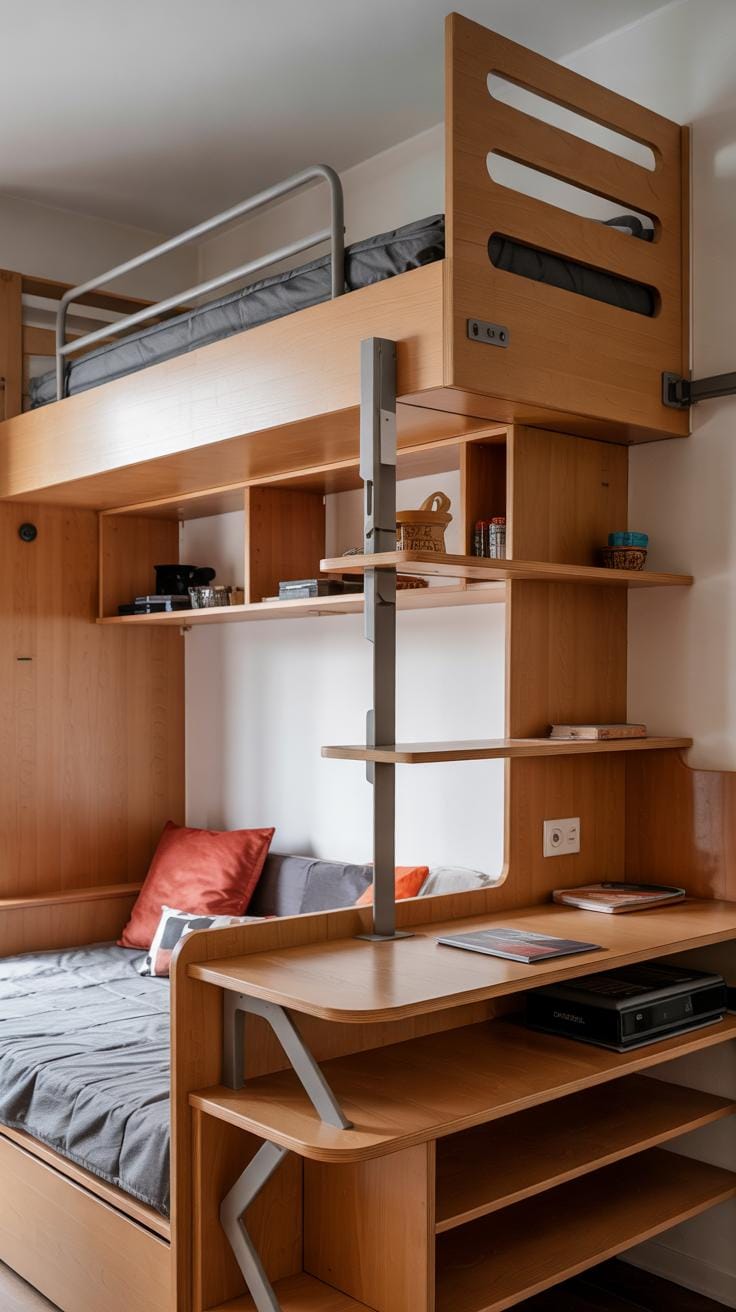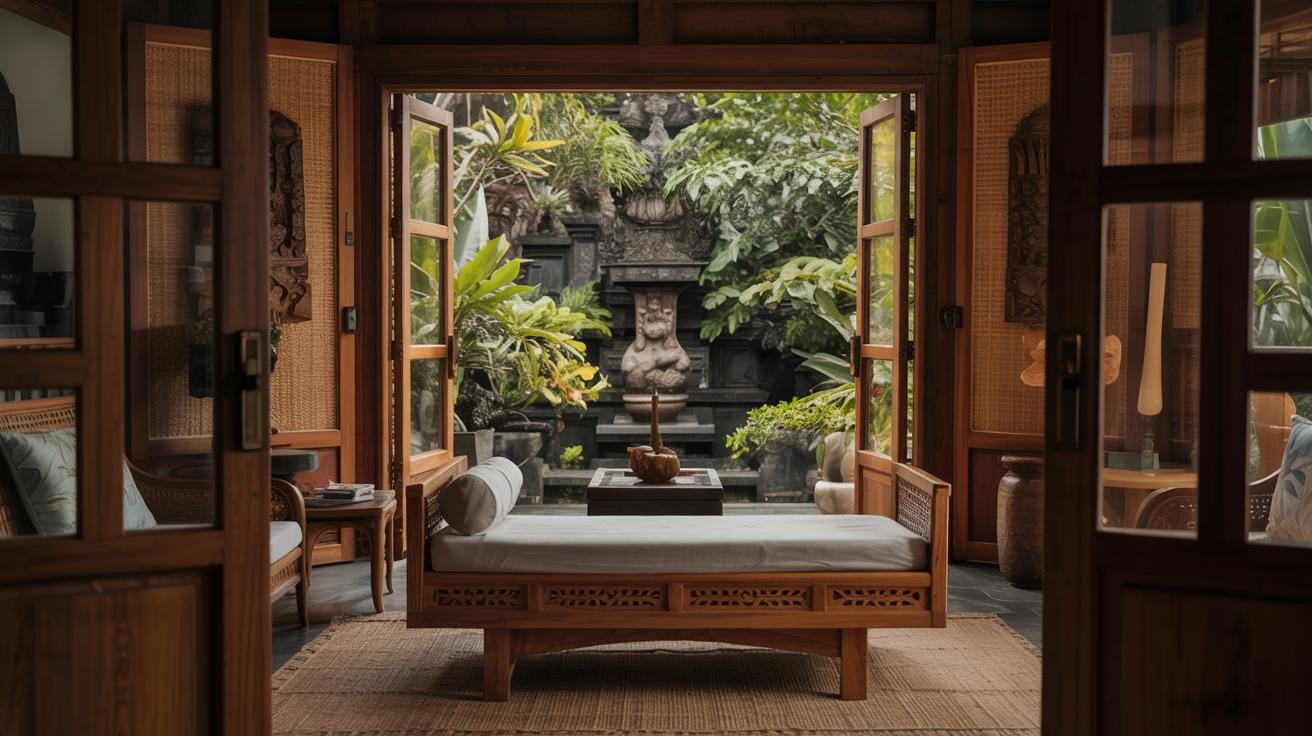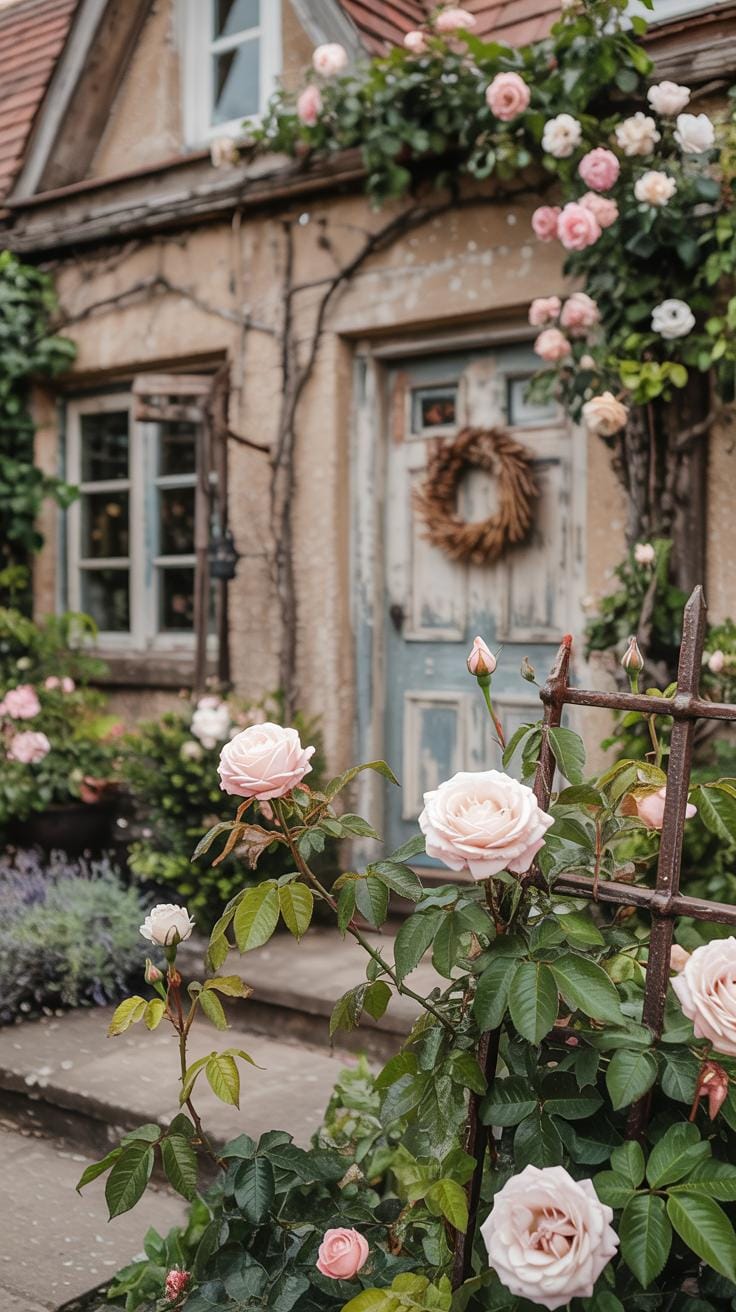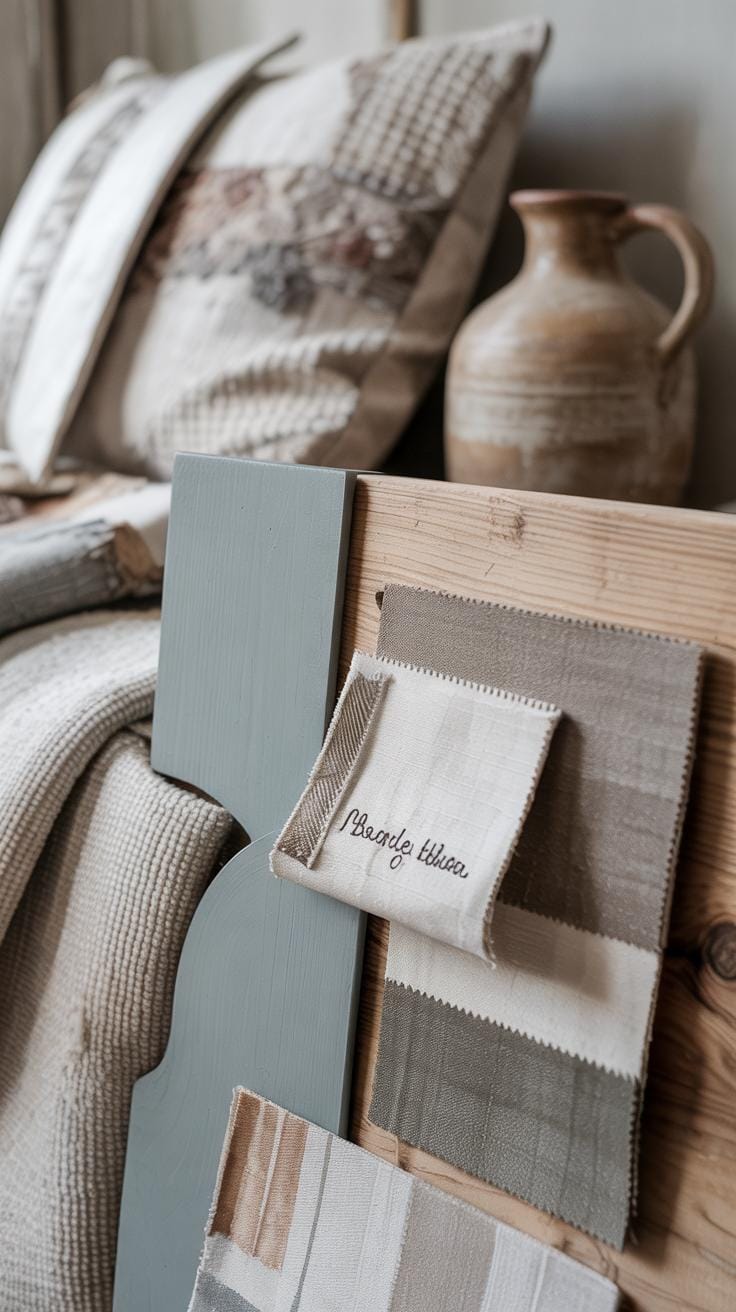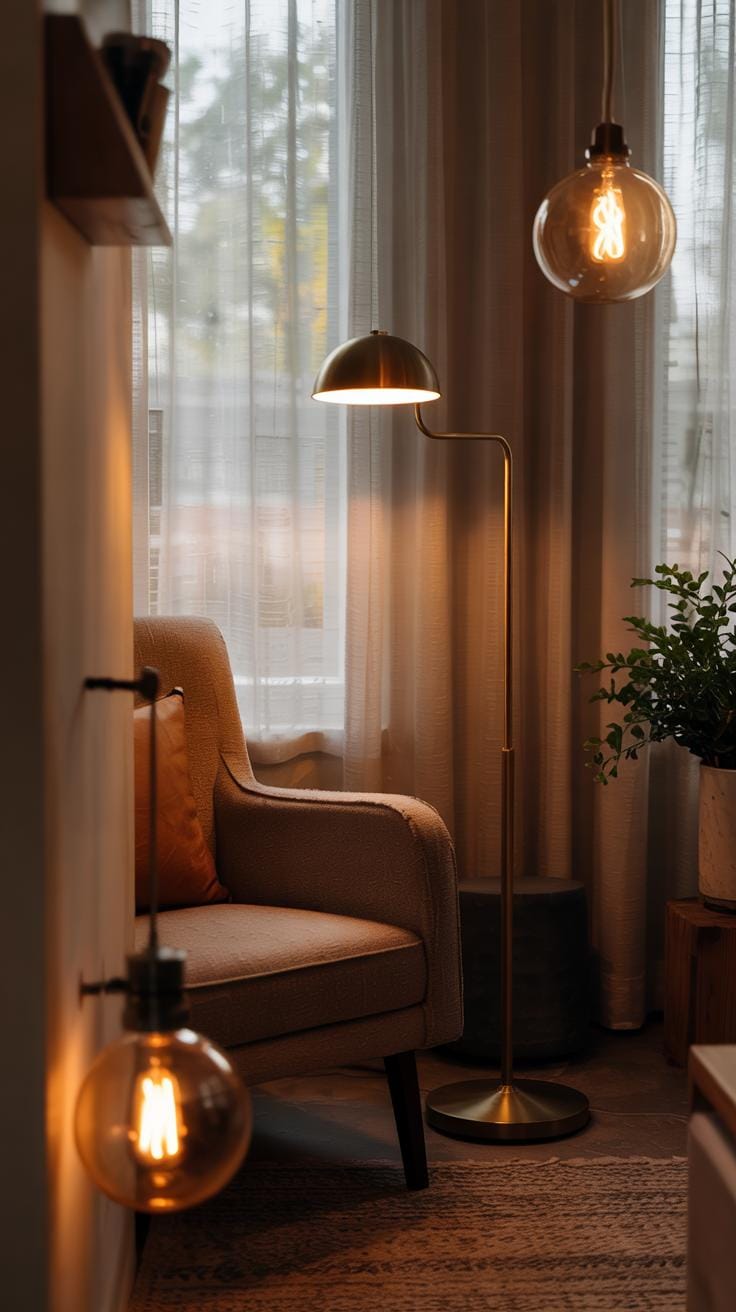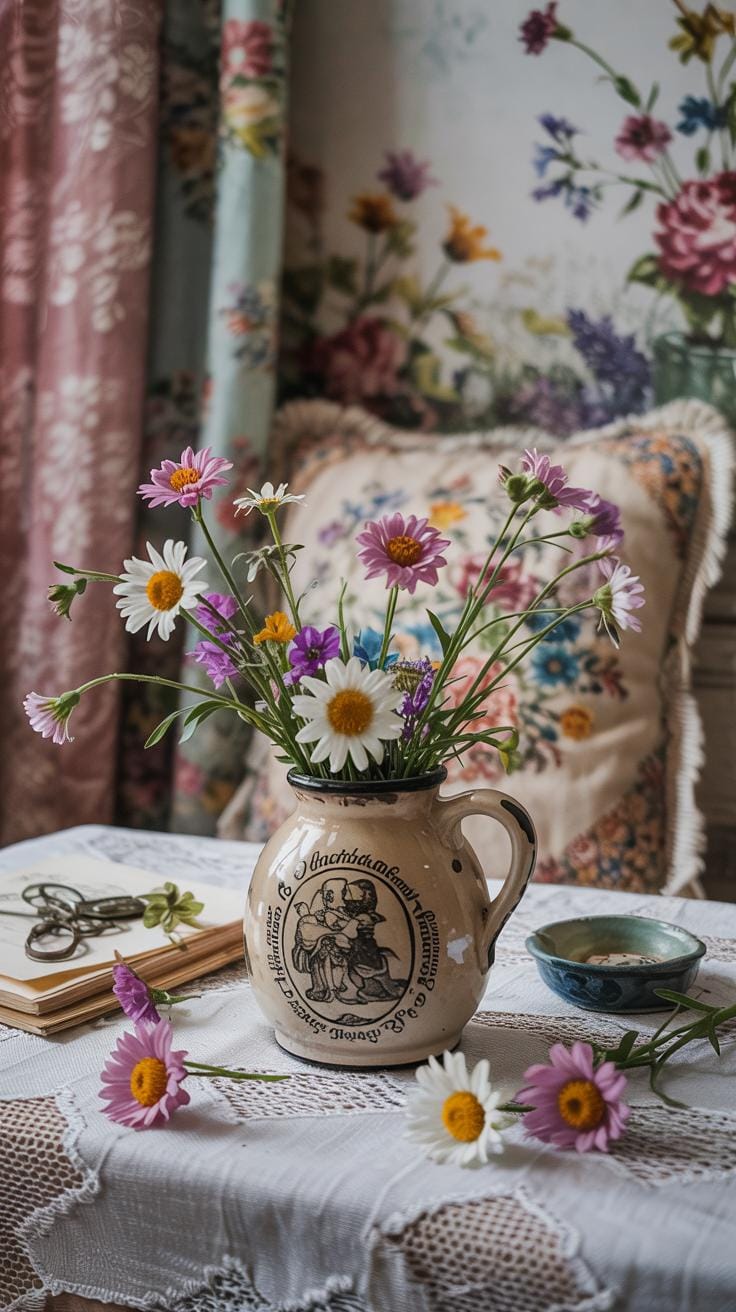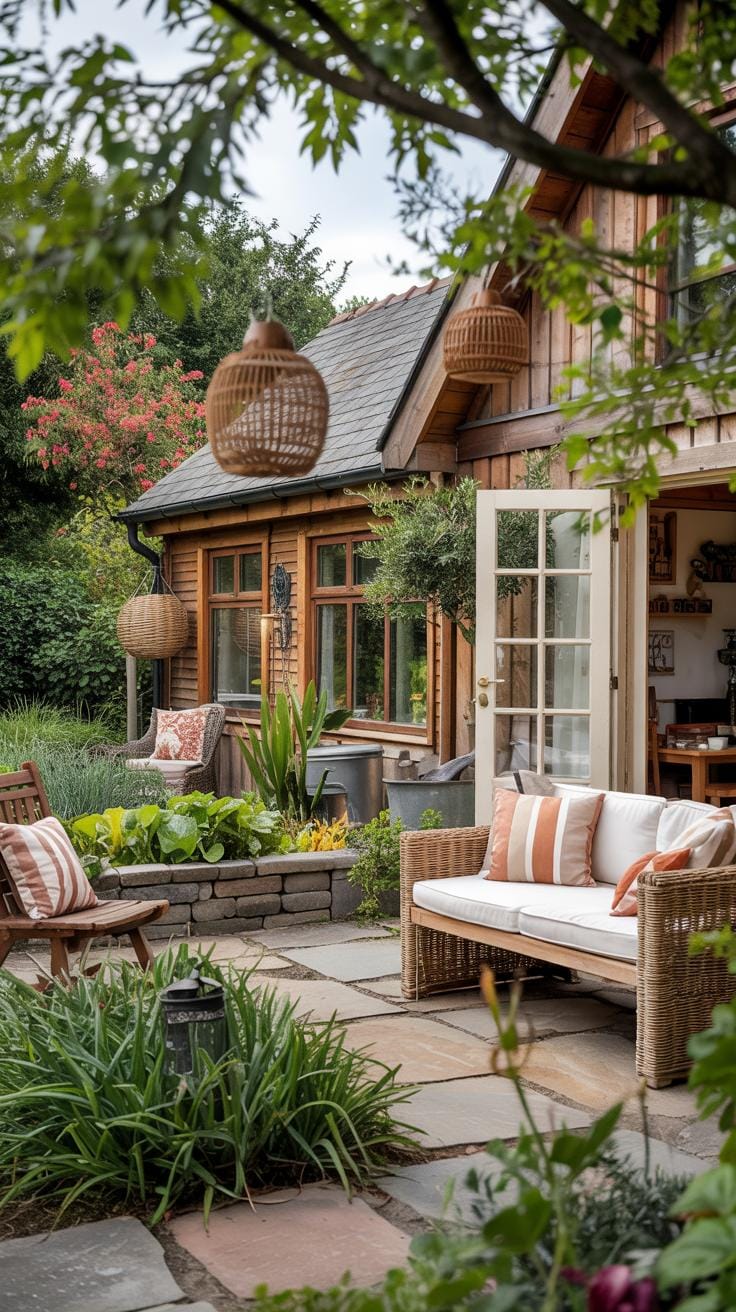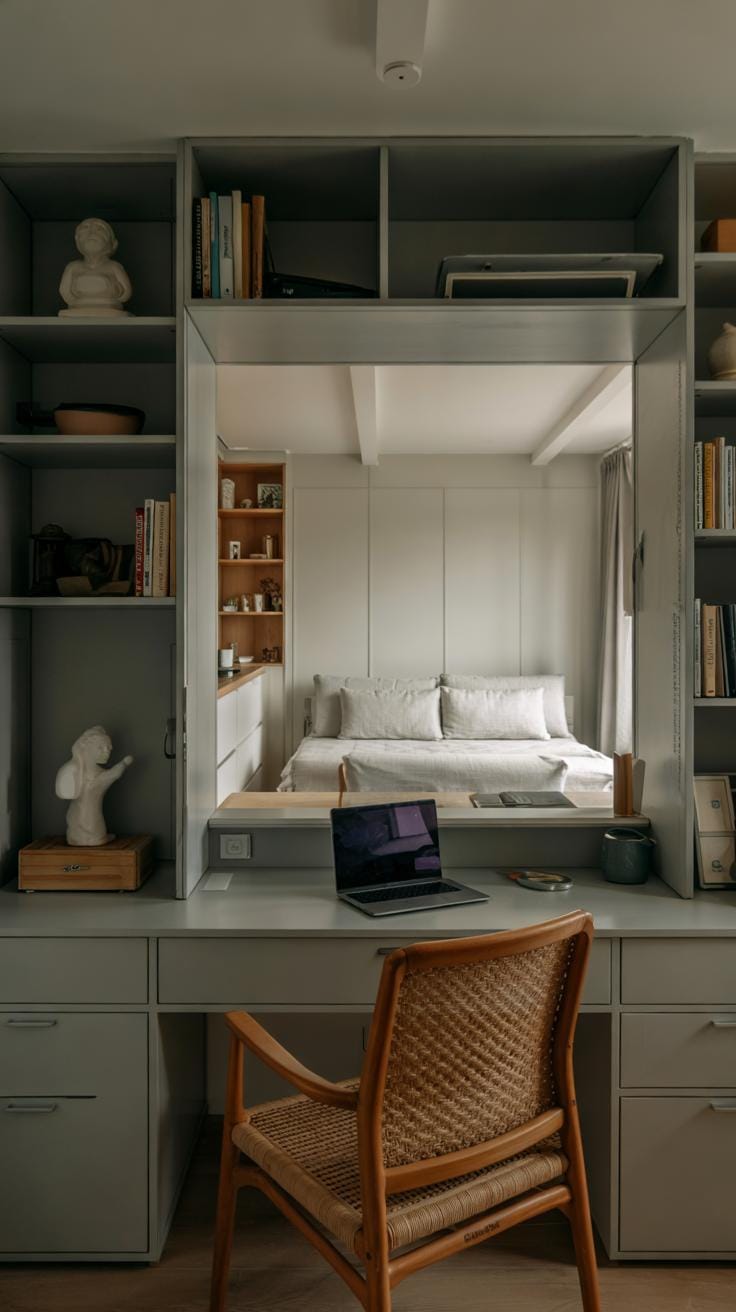Introduction
Small cottage homes offer a unique blend of simplicity and coziness that many people find appealing. These dwellings, often modest in size and rooted in traditional build styles, provide a comfortable living space without the excess of larger homes. Whether located in rural or semi-rural areas, small cottages deliver an intimate atmosphere perfect for individuals or small families seeking a peaceful retreat. Exploring the features and design trends of small cottage homes can help you make informed decisions when choosing or renovating your own cottage.
When you consider a small cottage home, think about how the design can maximize both function and aesthetic appeal. From the arrangement of living spaces to the choice of materials and decor, you have many options to create a charming environment. This article covers practical ideas and modern trends that suit the unique challenges and opportunities presented by small cottages. You will find inspiration and guidance to optimize your space, enhance comfort, and reflect a style that suits your personality.
Understanding Small Cottage Homes
Your small cottage home is often defined by its size, usually under 1,000 square feet. These homes focus on simple, functional living spaces that fit all essentials within a compact footprint. Architectural features include steep or simple roof lines, front porches, and often quaint windows. Many small cottages use natural materials like wood or stone to blend with their surroundings.
Historically, small cottages have roots in rural Europe and early American settlements. They were built for simplicity and shelter rather than luxury. Today, people cherish small cottages for practical reasons like lower costs and easier upkeep. The cultural draw comes from a desire for a slower pace and close connection to nature.
Could choosing a small cottage help you focus more on what matters in your life? What would living in a smaller, well-designed space feel like for you?
Key Features of Small Cottage Homes
Small cottage homes usually have compact layouts that make good use of every inch. Rooms often serve multiple purposes. Roofs tend to be simple gable or shed styles that keep construction straightforward and costs down. Exterior materials like wood siding, shingles, or natural stone showcase traditional craftsmanship.
Windows are typically modest in size but arranged to let in natural light, creating a bright interior. Porches and small decks offer outdoor living space without requiring much land. Inside, you’ll find built-in storage to save room and keep clutter out of sight.
How might you adapt these features to fit your daily needs? Could you create a cozy nook or a garden space that enhances your cottage’s charm?
The Appeal of Small Cottage Living
Many people pick small cottages because they cost less to buy and maintain. Heating, cooling, and repairs are typically cheaper compared to larger homes. Small spaces demand less cleaning, which frees up time for other things.
The cozy environment feels welcoming and personal. You can design a home where every item has a purpose and every space feels lived-in. The closeness of rooms encourages family connection or peaceful solitude depending on your lifestyle.
Do you crave a home that feels manageable yet full of character? How might a smaller space support your goals for comfort and simplicity?
Maximizing Space in Small Cottage Homes
Making the most of limited space in a small cottage starts with a smart layout. Open floor plans help by reducing walls and barriers, creating a more spacious feel. When you eliminate extra walls, your cottage feels bigger and lets natural light flow freely.
Multi-functional furniture brings flexibility to tight spaces. Think about a sofa bed or a fold-down dining table. These pieces serve more than one purpose, so you don’t have to crowd your rooms with extra furniture. Imagine hosting guests overnight without giving up living room space during the day.
Creative storage solutions keep your cottage neat and open. Use vertical wall space for shelves or cabinets to keep the floor clear. Spaces under stairs can hide items out of sight yet stay easy to reach. Every corner should work hard to hold what you need without feeling cluttered.
What small spaces in your cottage could serve double duty? Could a window nook become a reading spot with hidden drawers underneath? By asking questions like these, you’ll find practical and creative ways to expand your living area.
Smart Furniture Choices
Furniture that does more than one thing saves space and adds convenience. A sofa bed is perfect when you want seating during the day and a bed at night. Fold-down tables give you dining or workspace when you need it, then disappear to free room.
Look for ottomans or benches with storage inside. Your furniture can hold blankets, books, or toys without adding clutter. Chairs that stack or fold allow you to bring out extra seating only when guests come.
Choose pieces with clean lines and simple designs. Bulky, heavy furniture reduces space and limits your options. Ask yourself: can this chair or table easily shift or store away? These questions help keep your cottage flexible.
Creative Storage Options
Think vertically to find storage space you might miss. Tall shelves or cabinets let you use the room’s height, keeping things off the floor. Built-in shelves save space and fit perfectly into walls, making the most of odd corners.
Don’t overlook under-stair storage. Drawers or cubbies here combinethe trick of hidden storage with easy access. Use hooks and pegboards on walls to hang tools, kitchen items, or accessories, clearing counters and cabinets.
Look for furniture that also stores items. Beds with drawers underneath or benches with compartments add secret spots for storage. When you keep clutter controlled, your cottage stays open and inviting.
Design Trends for Exterior Cottage Appeal
Flower boxes bring life and color to small cottage windows, creating a warm, inviting look that suits cozy homes perfectly. Wooden siding remains a popular choice for its natural texture and ability to age gracefully, adding character without overwhelming limited spaces. Small porches provide a practical outdoor area while enhancing curb appeal with simple architectural interest. These porches also offer a welcoming space where you can relax or greet neighbors, reflecting the community spirit often found near small cottages. If you picture your own cottage, what exterior element would give it charm without crowding the facade? Focusing on balanced, functional details like these helps keep the small home feeling open yet full of personality.
Natural Materials for Character
Wood, stone, and brick connect a cottage to its surroundings and to traditional building methods. Wood siding offers a timeless look and can be painted or left natural to show grain and age. Stone gives a sturdy, grounded feeling, often placed around foundations or chimneys to anchor the home visually. Brick adds texture and warmth, especially in smaller accents like garden walls or entryways. Choosing materials that reflect your local environment makes the cottage appear as part of the landscape rather than an outsider. Have you noticed how a well-matched material can turn a simple house into one with personality that fits the setting perfectly?
Outdoor Living Spaces
Small patios, gardens, and porches extend your living area beyond walls, making your cottage feel larger. A compact patio with comfortable seating invites you outside, while a garden can offer both beauty and a chance to grow herbs or flowers. Porches act as transition spaces, providing shelter but still connecting you to the outdoors. These areas also encourage relaxation and socializing with minimal fuss. When planning, consider how you use your outdoor spaces daily: Do you want a peaceful spot to read, or a place to host friends? Thoughtful design of these areas makes your small cottage more livable and welcoming.
Choosing Colors and Textures for Small Cottages
The colors and textures you choose shape how your small cottage feels inside and out. Picking the right combinations can make your home feel welcoming and spacious, even with limited square footage.
Light colors work well on walls and ceilings because they reflect more natural light. Shades such as soft whites, pale grays, or muted creams brighten rooms and make corners appear farther apart. These colors create a subtle backdrop for your furniture and décor, helping your space avoid feeling cramped. You could try pairing pale walls with slightly darker trims or furniture to add contrast without reducing lightness.
Texture provides depth that color alone cannot achieve. Rough wood beams, exposed brick, or weathered stone bring an earthy quality to your rooms. On the softer side, fabrics like linen curtains, woolen throws, or woven rugs add warmth and comfort. Mixing smooth surfaces, like painted walls or glossy tiles, with tactile materials keeps your cottage visually interesting. Consider how these textures make you feel—does the room invite you to relax or energize you?
Have you thought about how your chosen colors and textures work together with your cottage’s natural surroundings? When you bring outside elements inside, your home feels more connected and unified. Try selecting colors and textures that complement your garden or porch materials. This choice will give your cottage a balanced and pleasing appearance both inside and out.
Light Colors for Brightness
Using light, neutral colors is a smart way to make small spaces feel larger. They bounce light around, reducing shadows that close in on you. For example, painting walls in soft beige or pale blue helps open up the room visually.
These colors don’t compete with furniture or décor, which lets you showcase personal touches without overwhelming the space. Light hues on ceilings lift the eye upward, giving an illusion of height. Even doors and window trim in lighter shades can expand the room’s sense of scale.
Have you tested your color choices in different lighting, such as morning sun or evening lamps? Sometimes a color looks warm and airy in daylight but dull in dim lighting. Picking light colors that keep their tone in various light conditions will maintain brightness throughout the day.
Texture to Add Interest
Adding texture breaks up flat surfaces and prevents rooms from feeling dull. For instance, rough wood beams on the ceiling create a classic cottage look and add a tactile focal point.
Soft fabrics like velvet cushions or woven rugs offer comfort underfoot and invite you to linger longer. Mixing these with smooth surfaces, such as polished kitchen counters or plaster walls, enhances contrast and makes rooms feel more layered.
Consider how texture influences mood in your space. Natural fibers can make a room feel relaxed, while shiny metals or glass add a modern edge. Are there any surfaces in your cottage that feel plain or cold? Introducing different textures there can warm the space and boost visual appeal.
Lighting Strategies for Cozy Spaces
Maximizing Daylight
Position your windows to face the sun for the brightest natural light during the day. South-facing windows often catch the most sunlight, filling your space with warmth and brightness. When arranging furniture, avoid blocking windows to let light travel freely inside your cottage.
Use light-colored curtains made from sheer or semi-sheer fabrics. These allow sunlight to enter while maintaining privacy. For example, linen curtains can soften the incoming light without making rooms feel dark or closed off.
How could changing your window treatments affect the mood of your cottage during the day? Try keeping your windows clear of heavy drapes and notice how much larger and inviting your rooms feel when sunlight fills the space.
Layered Lighting for Evenings
Combine different types of lighting to create a warm and inviting atmosphere at night. Overhead lights provide general brightness, but adding task lights, such as reading lamps, helps focus light where you need it most. For instance, place a small lamp near your favorite chair for comfortable reading.
Accent lighting, like wall sconces or LED strips under shelves, adds depth and coziness to your cottage. Use warm-white bulbs to create a soft glow that feels relaxing and homely.
Think about how layering light sources can change your evenings. Would a dimmable overhead light combined with a table lamp improve the comfort of your cottage after sunset? Experiment with different lights to find the balance that suits your lifestyle.
Furniture and Decor to Reflect Cottage Charm
Your small cottage feels like home when every piece of furniture and decor reflects its cozy charm. Choosing wooden furniture with simple lines supports both style and function. Solid wood tables, chairs, and dressers offer durability while creating a warm natural atmosphere. You benefit from easy maintenance and long-lasting comfort. Look for pieces with soft, comfortable cushions covered in cotton or linen fabrics to make your space inviting. Avoid overly ornate styles that crowd small rooms.
Think about how handmade quilts, vintage lamps, and rustic ceramics bring personality to your cottage. Quilts add texture and a personal touch through colors and patterns. Vintage lamps provide soft, warm light that pairs perfectly with natural light strategies you’ve planned. Rustic ceramics like hand-thrown bowls and pitchers add authenticity and function. How could these small details change how you feel each day inside your home? You can mix and match these elements to maintain an uncluttered but stylish setting that feels uniquely yours.
Choosing Cottage Style Furniture
Wood furniture offers warmth and strength for your small cottage. Simple designs avoid overwhelming your space and complement natural elements. You can reuse or refinish older pieces to add history and reduce waste. Comfortable cushions in neutral, soft fabrics invite you to sit and relax. Consider slipcovers for easy cleaning and seasonal refreshes.
Wood tones such as pine, oak, or maple work well with light walls and bring balance. Choose multi-purpose pieces like benches with storage to save space. Have you tried combining a wooden table with cushioned chairs for daily comfort and easy upkeep? Practical furniture choices make your cottage feel both timeless and livable.
Decorative Touches That Make a Difference
Small touches add depth to cottage charm. Handmade quilts offer warmth while telling stories through their stitch patterns and colors. Think about a favorite quilt passed down or made by you to connect with tradition. Vintage lamps create mood lighting that softens evenings and highlights textured walls or wood beams.
Rustic ceramics serve as both decor and daily tools. Handcrafted mugs, bowls, and vases convey craftsmanship and provide visual interest. Adding greenery to these ceramics brings freshness without overpowering the room. What small accessory could you add today that would instantly make your space feel more lived-in and loved? Mixing these elements thoughtfully helps your cottage feel complete without crowding your small space.
Incorporating Sustainability in Cottage Design
Your small cottage can be both charming and kind to the environment. Choosing the right materials and features can reduce your environmental impact while keeping comfort and style intact. Consider how your design choices affect energy use and waste, and make decisions that reflect your values.
Sustainable Building Materials
Reclaimed wood offers character and history to your cottage while reducing the demand for new lumber. This choice cuts down on deforestation and often costs less than new wood. Natural insulation, such as sheep’s wool or cellulose, keeps your home warm without harmful chemicals. These materials improve air quality and lower your heating bill. Have you thought about where your building materials come from and how they affect the planet?
Energy-Efficient Features
Energy-saving windows help keep your cottage warm in winter and cool in summer. Double or triple-pane glass with proper sealing reduces drafts and lowers energy bills. LED lighting uses far less electricity than traditional bulbs and lasts longer, saving money over time. Solar panels can power your small home with clean energy, especially if you live in a sunny area. Have you considered how these features could make your cottage more sustainable and lower your utility costs?
Creating Functional Outdoor Spaces
Small cottage homes often have limited square footage inside, but the outdoors offers a valuable chance to expand your living area. You can design patios, gardens, and yards that suit your lifestyle and make your cottage feel larger. Start by considering how you want to use the space. Would you like a calm spot for morning coffee or an area where family and friends gather?
Think of defined zones. A compact patio with weather-resistant seating can become an inviting nook. Raised garden beds provide easy access and add structure. Paths made from natural stone or gravel can connect these zones and make your yard feel organized. Lighting is also key—solar-powered lights along walkways create a warm glow without extra wiring.
What outdoor features could boost your daily comfort or hobbies? Sliding panels or retractable awnings offer shade and shelter, extending usability through changing weather. Incorporate vertical garden elements or trellises to save space while adding greenery. Each element you choose should help your outdoor area become an extension of the cozy life inside your small cottage.
Garden Design for Relaxation
Growing flowers and herbs in your cottage garden brings more than color and scent. Plants like lavender, chamomile, and mint promote calm and can make your outdoor space feel like a personal retreat. When you tend to them, you engage in a simple, soothing ritual that can ease daily stress.
Planting in small containers or raised beds keeps garden maintenance manageable. Mix blooming flowers with herbs that serve cooking and wellness needs. For example, rosemary near your kitchen door is handy for meals. Marigolds deter pests naturally, reducing reliance on chemicals.
Design your planting areas where you can sit and enjoy them fully. Position a bench or hammock nearby so you can pause and breathe in the fresh air. How can your garden encourage more moments of rest and attentiveness to nature?
Versatile Outdoor Areas
Your outdoor space can do more than look attractive. Incorporate seating options that invite relaxation and socializing. A simple wooden bench or foldable chairs provide flexibility. Add a dining table for family meals or gatherings under the open sky.
Fire pits or small chimineas create warmth and a focal point for conversations as daylight fades. Choose compact models that fit your yard size. Consider stackable firewood racks to keep your space tidy and ready for use.
Think about storage too. Benches that open can hold cushions or gardening tools. Multi-use furniture lets you maximize space without clutter. How can you arrange your outdoor area to meet needs ranging from quiet reading to lively dinners?
Adapting Small Cottages for Modern Needs
You can update a small cottage to include modern conveniences without losing its classic charm. Start with practical changes that improve daily living. For example, improve insulation and windows to make the space more energy efficient. This keeps your cottage cozy while lowering bills.
Focus on clever storage solutions to maintain open spaces. Built-in shelves or under-stair cabinets fit small cottages well. They keep clutter out of sight and preserve the traditional look. Think about using natural materials to match the cottage’s style, such as wood or stone finishes.
How do you keep technology from overwhelming your cottage? Use small, subtle upgrades that blend with the décor. Smart lighting systems can mimic warm, vintage light while offering modern controls. Still, maintain the cottage’s simple feel by avoiding large or flashy devices.
Modern Kitchen and Bath Solutions
Choosing compact appliances makes a big difference in a small cottage kitchen or bath. Slim refrigerators, drawer dishwashers, and combination microwave-ovens save space. These products offer full function without crowding your room.
In bathrooms, wall-mounted faucets and toilets create easier cleaning areas and free floor space. Consider a corner shower enclosure if a tub feels too cramped. Modular vanities with hidden storage help you stay organized.
Think about your daily habits. How can your kitchen or bath serve those needs without adding bulk? Opt for flexible, multi-use items. This keeps your cottage efficient and comfortable.
Integrating Technology Seamlessly
Smart home features can be added discreetly to small cottages. Wireless security cameras disguised as outdoor lights provide safety without ruining the view. Use voice-controlled assistants hidden in wooden cases or classic designs.
Choose thermostats with a vintage look but modern programming features. This keeps comfort high without changing the room’s style. Smart plugs and switches that fit inside existing outlets let you control appliances unseen.
Ask yourself, which devices will enhance your lifestyle without drawing attention? This approach helps you enjoy modern technology while keeping your cottage’s warm, traditional feel intact.
Planning Your Small Cottage Project
Creating or renovating a small cottage calls for clear planning from the start. Your project will go smoother if you know exactly what you want to achieve and how much it will cost.
Begin by thinking about your must-haves versus nice-to-haves. Which features suit your lifestyle? This helps avoid overspending on extras you don’t need. Consider the size, layout, and style that match your everyday use.
Obtain estimates for materials and labor. Different woods, roofing, or finishes carry different price tags. Ask local suppliers and contractors for quotes to get an accurate picture. Don’t forget to include the cost of permits and inspections required for your area.
Ask yourself: What’s the maximum budget you can commit to without stress? Plan some wiggle room for unexpected expenses. This will help you balance quality with affordability.
Setting a Realistic Budget
Your budget needs to cover more than just construction. Start with material costs—wood, siding, windows, and insulation. Prices vary widely depending on the quality and source. Find a balance between durability and cost.
Labor charges form a large portion of expenses. Skilled workers may charge more but can deliver better results. Research hourly rates for builders in your region to avoid surprises.
Factor in permits and fees. Small projects still require approvals to meet local codes. Contact your town’s building department early to learn the requirements. Missing this step can cause costly delays.
Plan a contingency fund. Around 10 to 15 percent extra of your total budget is recommended to handle unforeseen needs. This protects you from having to pause work mid-project.
Hiring Professionals and DIY Options
Decide which parts of your cottage you want to handle yourself. Painting walls, installing fixtures, or landscaping can often be done by homeowners with some research and effort.
Complex tasks like foundation work, electrical wiring, or structural framing are best left to licensed professionals. Mistakes in these areas can become safety hazards or lead to expensive repairs later.
Bring in an architect or designer if you want custom plans or need help maximizing a small space. They can help you avoid costly design errors and make the project run more smoothly.
Think about your skills and schedule honestly. Do you have time and experience for a DIY kitchen renovation, or is it better to hire a contractor? The right mix depends on your confidence and the scope of work.
Conclusions
Your small cottage home can become a welcoming and efficient space reflecting your tastes and needs. By focusing on practical layouts, smart storage solutions, and design trends that emphasize natural materials and cozy features, you can transform your cottage into a comfortable haven. Thoughtful choices in color, furnishings, and lighting also contribute to an inviting atmosphere where every detail matters.
Considering small cottage homes involves balancing tradition with modern living requirements. Designs that respect the original character while integrating contemporary comforts offer the best of both worlds. As you plan your cottage living, remember to blend functionality with charm, creating a home that feels just right for you. How will you personalize your cottage to make it uniquely yours?

